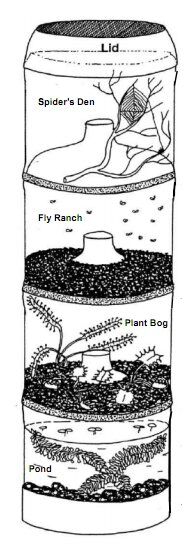Science experiments for children – Eco column. Artificial closed ecosystems exist in different sizes, for example, those relatively large, which were organized to study the ecological balance of the Earth and to verify the possibility of creating self-sufficient space stations, in preparation for colonizing the Moon, Mars, the space.
Plants consume carbon dioxide and produce oxygen; on the contrary animals consume oxygen and produce carbon dioxide.
Plants produce organic substances of which the animals eat. For their part, animals produce fertilizers useful to plants.
What is the general budget for all these exchanges?
Maintaining a sealed ecosystem small in size, what happens? Even our planet is a closed ecosystem in some way. Certainly it can not be said to be small, but it is basically closed, because the Earth does not exchange large quantities of substances with space.

There is lots of material in English, very well illustrated, to build eco column. Here are some examples, and many links.
______________________________
To prepare the closed ecosystem, good instructions can be found here:
http://www.saps.org.uk/ (download resources – SAPS Making an eco-column)
http://www.learner.org/courses/
______________________________
______________________________
______________________________
______________________________
Science experiments for children – Eco column
Other links:
http://www.funsci.com/fun3_it/